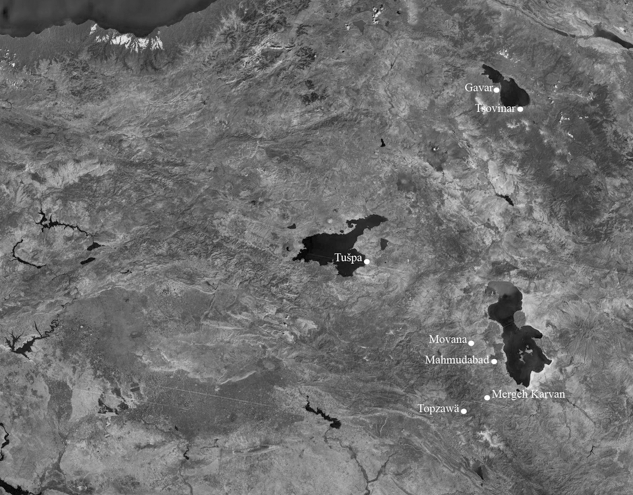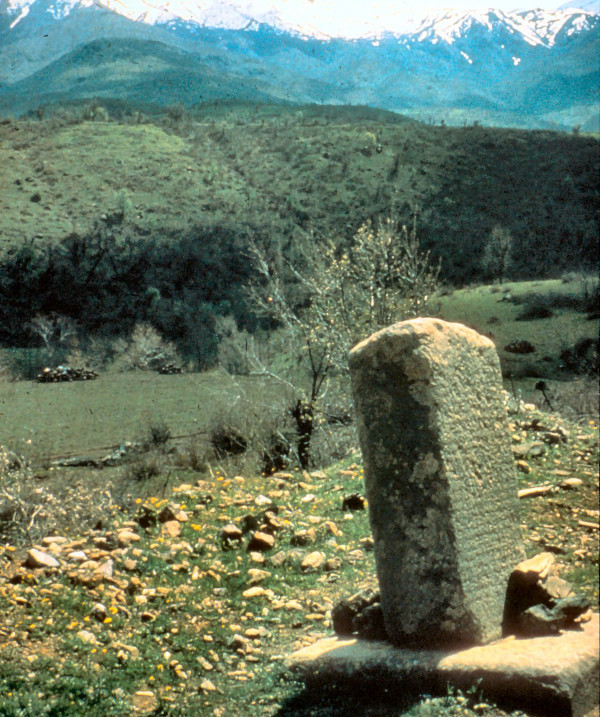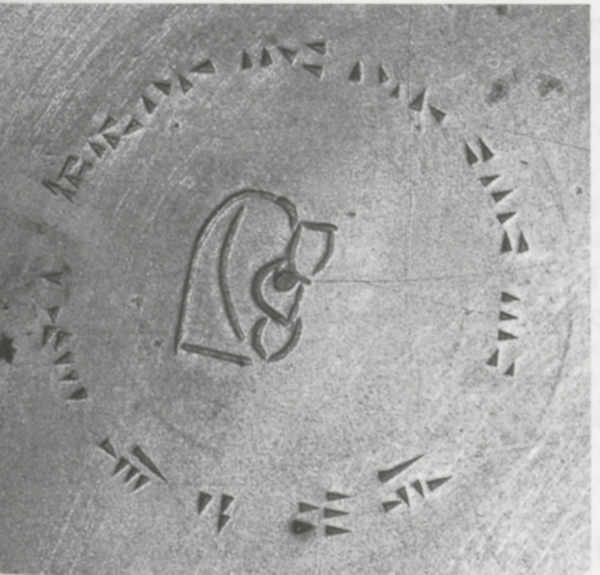Rusa, son of Sarduri II
Introduction
Until recently, most scholars assumed that Rusa, son of Sarduri was the son of Sarduri II, who followed his father Argišti I on the throne, and was the Rusa who opposed the Assyrian king Sargon II during his 8th campaign. His reign would then have lasted from approx. 730-713 (see, e.g., CTU III: 23; Çifçi 2017: 305f.; Fuchs 2012: 158).
As a result of the recent debate about Urartian chronology, initiated by Ursula Seidl's observations concerning art history (see Seidl 2004 and 2007), Michael Roaf (2012) has challenged this view. He has argued that Sargon II's opponent was actually Rusa, son of Erimena.
Like other scholars, Roaf assumes that Rusa's father Sarduri was the son of Argišti I, although he does not completely rule out the theory that he was the son of Sarduri, son of Sarduri, who is known only from a single inscription on a bronze shield found in Karmir Blur. Since most inscribed bronze objects from Karmir Blur date from the 8th century, Stephan Kroll had argued in 1984 that Sarduri, son of Sarduri, reigned in the 8th century and not in the middle of the 7th century, as other scholars had assumed (see, e.g., Salvini 2008: 23).
According to Roaf (2012), the most probable scenario was that Rusa, son of Sarduri, ascended the throne after the death of Rusa, son of Erimena in 713 BC. Alternatively, the former may have been king before he was deposed by Rusa, son of Erimena, and may have then regained the throne after the latter's death (Roaf 2012: 213). In the year 709 at the latest his son Argišti became ruler of Urartu.
The present overview follows Roaf (2012) by interpreting Rusa, son of Sarduri, as the contemporary of the Assyrian kings Sargon II and Sennacherib.

Map showing the distribution of the stone inscriptions of Rusa, son of Sarduri II, in: Mirjo Salvini, CTU I: 494.
Royal Titles
- (I am) Rusa, son of Sarduri, mighty king, the one who enlarged (or: exalted) the Bia lands (A 10-01, lines 7b-8)
- (I am) Rusa, son of Sarduri, servant of the god Ḫaldi" (A 10-03, obv. 5-6; A 10-04 rev. 6)
- (I am) Rusa, son of Sarduri, servant of the god Ḫaldi, faithful shepherd of the people (A 10-03 left 11'-14')
- (I am) Rusa, son of Sarduri, servant of the god Ḫaldi, faithful shepherd of the people, the one who approaches the house of the god Ḫaldi, the one who has no fear in battle (CTU 10-03 rev. 52'-53')
- (I am) Rusa, servant of the god Šebitu, in view of the god Šebitu I am subordinate(??) (A 10-06 9'-10').
Military activities
According to his inscriptions on the stelae of Movana (A 10-03), Mergeh Karvan (A 10-04), and Topzawa (10-05), Sarduri fought successfully against Muṣaṣir and restored the cult of the god Ḫaldi in the deity's main sanctuary there. It had formerly been destroyed by Sargon II.

Stele of Movana, photo: Mirjo Salvini, CTU III: 295

Stele of Topzawa with Urartian-Assyrian bilingual inscription, photo: Stephan Kroll
Rusa, son of Sarduri, further expanded Urartu in the north by conquering several lands in the region to the west of Lake Sevan, including the land of Uelikuḫi. There he built the "City of the God Ḫaldi" and installed a governor. These events are reported in a rock inscription located in Tsovinar (A 10-02) and in an inscription on a stone block from Kamo (CTU A 10-01).
Further information about Rusa, son of Sarduri's reign may be obtained from the Assyrian state correspondence, in letters sent to Sargon II by the crown prince Sennacherib. The dating of these letters is, however, unclear, not do we know to which Urartian ruler they refer, since his name is never given. Therefore, we do not know the identity of the Urartian ruler who fought the Cimmerians and was ultimately defeated by them.
According to Lanfranchi (1983), the military conflicts between the Urartians and Cimmerians and Sargon's attack on Muṣaṣir were related events which took place close to each other in time. Fuchs (2012) and Roaf (2012), however, have argued convincingly that the Urartian-Cimmerian conflicts were independent of Sargon's 8th campaign and occurred at a later time. According to Roaf (2012), the Urartian king who battled the Cimmerians (and was eventually defeated) was most probably Rusa, son of Sarduri, whereas Fuchs (2012) considers it more likely that it was his successor, Argišti II.
If we follow Roaf (2012), it would then have been Rusa, son of Sarduri, who mobilized the Urartian army to wage war against the Cimmerians, whose land, which in Assyrian is called KURGamir, likely lay to the north or north-east of Lake Sevan.
These campaigns may have started after Rusa's defeat of the land Guriaini, mentioned in the Tsovinar rock-inscription among a total of 19 conquered lands in the same region (A 10-02 line 9). According to the Assyrian sources, Guriaini (or: Guriania) was a district between Urartu and Cimmeria which paid tribute to Urartu (SAA 5 92: 5-8, see Roaf 2012: 211). The Cimmerians, on the other hand, were obviously a more difficult opponent who eventually defeated the Urartians.
Building activities
According to CTU A 10-02 (lines 15-18), Rusa built fortresses throughout the Bia lands (which is the Urartian's own name for their domain, and equivalent to the Assyrian name Urartu) for its protection. One of them, which he named "City of the Weather-God," was situated in the area of lake Sewan (Tsovinar in modern Armenia). CTU A 10-01 mentions the foundation of the fortress "City of the God Ḫaldi" where Rusa also erected a "Gate of the God Ḫaldi" (Nor Bajaset in modern Armenia). As the "City of the Weather-God," it served to protect the Bia lands. In Van, the king erected a stele for the Weather-God (CTU A 10-07).

Stele of Movana, photo: Mirjo Salvini: CTU III: 295
Religious activities
Furthermore, Rusa, son of Sarduri, established a ritual of sheep offerings to the god Šebitu to be performed in conjunction with building projects and the restoration of tower temples. He also directed sheep offerings for the gods Arṭuarasau and Šebitu, as well as for "The Gate of the God Šebitu" when a king intended to go to war (A 10-06).
Inscriptions on metal objects
Bronze objects were found in Karmir Blur (B 10-1 to 3A-C). One was a votive offering for the god Ḫaldi (B 10-01; shield), while B 10-02 and B 10-03 (cups) refer to being owned by Rusa, son of Erimena.

Bronze cup from Karmir-blur, photo: Mirjo Salvini, CTU IV: 57
Further reading
Birgit Christiansen
Birgit Christiansen, 'Rusa, son of Sarduri II', Electronic Corpus of Urartian Texts (eCUT) Project, The eCUT Project, a sub-project of MOCCI, 2021 [http://oracc.museum.upenn.edu/ecut/urartianrulersandtheirinscriptions/rusasonofsarduriiia10andb10/]